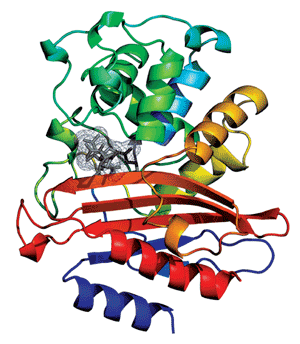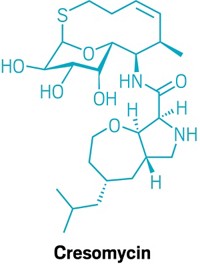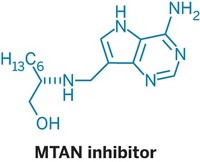Advertisement
Grab your lab coat. Let's get started
Welcome!
Welcome!
Create an account below to get 6 C&EN articles per month, receive newsletters and more - all free.
It seems this is your first time logging in online. Please enter the following information to continue.
As an ACS member you automatically get access to this site. All we need is few more details to create your reading experience.
Not you? Sign in with a different account.
Not you? Sign in with a different account.
ERROR 1
ERROR 1
ERROR 2
ERROR 2
ERROR 2
ERROR 2
ERROR 2
Password and Confirm password must match.
If you have an ACS member number, please enter it here so we can link this account to your membership. (optional)
ERROR 2
ACS values your privacy. By submitting your information, you are gaining access to C&EN and subscribing to our weekly newsletter. We use the information you provide to make your reading experience better, and we will never sell your data to third party members.
Pharmaceuticals
Drug Combo Kills Resistant TB
Inhibitor and antibiotic work together against tuberculosis
by Celia Henry Arnaud
March 2, 2009
| A version of this story appeared in
Volume 87, Issue 9

A COMBINATION of two commercially available drugs is effective against extensively drug-resistant (XDR) Mycobacterium tuberculosis, lab tests show (Science 2009, 323, 1215). XDR strains are resistant to all the drugs typically used to treat TB.
Biochemist John S. Blanchard of Albert Einstein College of Medicine at Yeshiva University, in New York City, and coworkers tested the drugs meropenem, a β-lactam antibiotic, and clavulanate, a β-lactamase inhibitor. β-Lactam antibiotics have not found use as TB drugs because mycobacterial β-lactamase enzymes normally hydrolyze them before they can reach their target.
Blanchard's lab had previously shown that clavulanate is an irreversible inhibitor of the β-lactamase produced by M. tuberculosis, an enzyme called BlaC. The researchers combined meropenem with clavulanate because BlaC hydrolyzes meropenem very slowly.
The combination inhibited 13 XDR TB strains, as well as organisms in a nonreplicative "persistent" state. This state is usually not susceptible to antibiotics and represents the largest reservoir of the mycobacterium in humans.
Blanchard speculates that the clavulanate-meropenem pair is so effective because meropenem itself also inhibits BlaC. "Meropenem, by being able to bind to and inhibit the β-lactamase, commits suicide so the rest of the meropenem molecules can go find their targets," he says.
The observed effect "may stimulate further drug development research into capturing the β-lactam class of antibiotics for use as anti-TB agents," says William Bishai, codirector of the Center for Tuberculosis Research at Johns Hopkins School of Medicine.
One of the stumbling blocks in developing the drug combination for use in patients is figuring out the pharmacokinetics, says Clifton E. Barry III, head of the TB research section at the National Institutes of Health and Blanchard's collaborator. "You want to be able to give the β-lactamase inhibitor and the β-lactam in a way that maximizes the lifetime of the β-lactam," he says.
Blanchard and his team hope their results will overturn long-held beliefs about β-lactams. "I've been told that β-lactams are not effective against TB, and we're wasting our time trying them," Blanchard says. "When you run up to paradigms and suggest that the paradigms may not exactly be true, you run into a lot of skepticism."





Join the conversation
Contact the reporter
Submit a Letter to the Editor for publication
Engage with us on Twitter